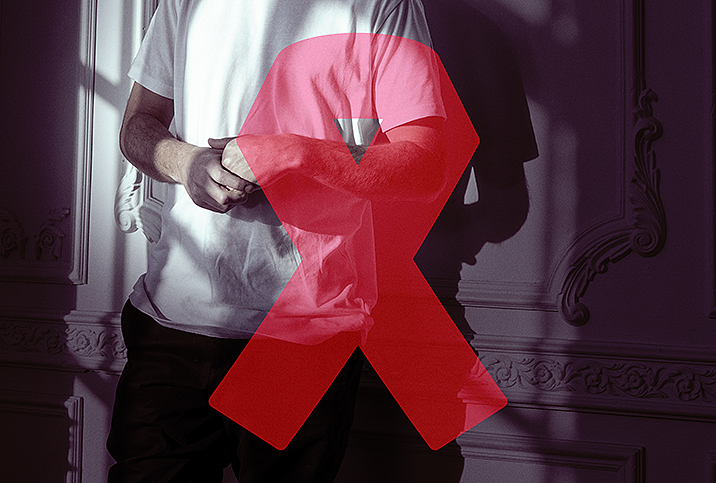The Stigma in Venereal Vernacular

When we talk about sexually transmitted conditions, we inevitably land on the concept of "stigma." Stigma refers to a literal or figurative mark of shame. People face stigmatization for all sorts of reasons: their sexual orientation, their gender expression or because of some unique physical or mental characteristic they possess.
While stigma can have an oppressive presence in a person's life, it is not in and of itself evidence of discrimination. When a person has difficulty accessing any kind of health service due to their sexual history, however, the line between stigma and discrimination becomes blurred.
Stigma as gender and class warfare
Disambiguation between stigma and discrimination is important in a medical context. To understand this line of thinking, we must acknowledge that discrimination is not necessarily or inherently active or aggressive. Passive discrimination exists insidiously and causes its own unique brand of damage to the collective social psyche.
To speak about the rampant influence discrimination has on our society should bear no judgment or discomfort for the speaker. And yet, because discrimination is such an ugly word, we gloss over the implication of discrimination by blaming pervasive stigma in order to ease the burden of our own compliance.
"Stigma is not only how the person internalizes those feelings, but a lot of stigmas are based on their perception—how they think other people are judging them or internalizing them," said Lawrence A. Siegel, M.A., a sexuality educator and clinical sexologist in Boynton Beach, Florida.
Stigma is a real and pertinent issue to the matter of living with a sexually transmitted condition. Passive discrimination also exists and causes harm in the effort to reduce or minimize the impact of stigma. To blur the line between these two related but separate experiences does a disservice to the treatment of both.
"Without meaning to sound hyperbolic, these actually can sort of unfold into truly life-and-death issues," Siegel said about the discussion of sex-specific conditions in doctor-patient dynamics.
Puritan influences create pathways to the condemnation of sexuality by disempowering women, while overzealously rewarding men, for sexual performance or conquest.
He made a point to acknowledge how stigma is experienced by all people differently. Men and women experience stigma for reasons of different social mores, and people living across various aspects of gender and sexuality spectrums experience stigma in constant collaboration with discriminatory attitudes. Not knowing where stigma ends and discrimination begins (or vice versa) makes the battle seem much larger.
Stigma is as pervasive as it is abstract. Understanding stigma requires at least a modicum of empathetic awareness. A person living with stigma must approach it with mindfulness of their own recovery needs, which is difficult to do when patients get used to seeing their stigma as an insurmountable, monolithic presence in their life.
Siegel pointed out the Puritan origins of this country still have a pervasive influence on critical institutions like education and medicine. Those influences create pathways to the condemnation of sexuality by disempowering women, while overzealously rewarding men, for sexual performance or conquest. He said women often learn to hide their sexual power, while men work just as hard to performatively prove their sexual power.
"And that plays out in the doctor's office, as well," Siegel said. "The medicalization of sex and sexuality, I think, reinforces and oftentimes legitimizes both stigma and discrimination."
In no way should these statements be construed as a damning indictment of the entire medical industry. However, language sensitivity is an important and often underemphasized aspect of the comprehensive medical experience.
Deborah Fox, MSW, a certified sex therapist in Washington, D.C., thinks she knows where to look when it comes to stimulating change where it matters most.
"Education, education, education," she said.
The punishment of sexual conditions
"When people have an STD, it is often very horrifying, and they feel a tremendous amount of shame," Fox said.
She emphasized that this shame is rarely isolated to one particular aspect of a person's experiences. Trauma and shame can be cumulative and collaborative without being directly connected to every shameful experience in our past. For instance, the trauma of an STD diagnosis can feel disproportionately strong because it pivots from the shame-inducing misinformation and social cues we learned when we were younger.
Perhaps this is where the punishment begins for a person diagnosed with a sexual condition. Many people consciously or subconsciously direct shame inward at themselves, creating a wake in the world. It splashes in one place and then ripples through the rest of us, diminishing occasionally, but then becoming reinvigorated when the next splash arrives.
Our legal framework, unfortunately, bears some responsibility in reinforcing the casually discriminatory nature of societal attitudes about sexually transmitted conditions.
According to the CDC, more than half of the country still has enforceable laws criminalizing HIV (human immunodeficiency virus) exposure. The CDC acknowledges these laws are outdated and do not reflect our current understanding of HIV, but this is perhaps one of the more severe aspects of systemic discrimination against sexually transmitted conditions.
Out-of-date and abstinence-only sexual education around the country also carries some blame for ignorance-based prejudice around sexual health and decision-making. Legislation has failed to create better sex education options for LGBTQIA+ people, to say the least.
Many medical facilities in the United States, including ones directed and operated by qualified and dedicated professional medical workers, are lacking in on-site or referrable resources to meet all of their patients' sexual-health needs. Implicit bias in medical care is a well-documented and consistent theme in U.S. medicine that has had unfortunate consequences in regard to sexual health access and education around the country, especially for people more prone to discrimination due to class or cultural distinctions.
"Sex education, in general, really kind of came out of this social movement of social hygiene," Siegel said, noting that sex ed frequently revolves around morality and sexuality as functions of social value. "Syphilis and gonorrhea, which are as old as civilization, have been associated with being 'dirty.'"
These influences have informed attitudes that unfairly criticize sexually provocative women, while simultaneously championing the heteronormative, promiscuous man.
"If I had a sexually transmitted infection, and I knew that I had it, and I had unprotected sex with somebody else, depending on where I live, that could be a third-degree felony," Siegel said, comparing STD laws to other contagious conditions like viral or bacterial pneumonia.
"The way we apply these things in terms of sexual behavior and the sort of, legal, almost legitimizing of sexual stigma—now that's a systemic discrimination right there," he continued. "Only sexually transmitted infections can be prosecutable if you knowingly spread it."
Stigmatized sexuality creates trauma discrimination
One of the challenges with systemic problems like discrimination is the fact that you can't always address it by pointing a finger at one flawed individual or organization. Conscious or subconscious discrimination against people with sexual health conditions can occur as part of a larger failing in our health system.
"There is a very similar thing with STIs and trauma," Siegel said. "There's that common element where [you think], 'Okay, this is something that happened to me, and therefore I am now in some way damaged or unclean.'" The connection between a sexual health diagnosis and trauma recovery cannot be ignored.
STI/STD patients are uniquely vulnerable because their ability to advocate for themselves may come into direct conflict with the expectations of the law or, at the very least, with the social stigmas concerning the person diagnosed. This puts greater emphasis on the need for the medical community to embrace the concept of personalized care in cases of STI/STD diagnosis because each case is unique and will likely require a varying degree of different mental and/or physical health components.
'Unfortunately, a major source of sex education is really from movies [and] social media of all kinds. That's how mythology abounds and stays mythology.'
"The idea behind sex ed is to educate, is to inform, is to help people make better decisions," Siegel said. "But, very often, without meaning to, we're also reinforcing a lot of the stigma. Whenever a sex educator is talking about making 'good' decisions, having 'responsible' sexual behavior, that's loaded with judgment."
There are also a lot of judgment-based pieces of language embedded in our collective vernacular, but sexual education is becoming the vanguard of progressive and inclusive sexual health language. This is important because it is a step toward breaking the cycle of misinformation and undeserved shame that persists in every aspect of health awareness.
"Unfortunately, a major source of sex education is really from movies [and] social media of all kinds," Fox said. "That's how mythology abounds and stays mythology."
Sexual stigma and discrimination are both very real but distinctively separate experiences shared by many people who receive an STI or STD diagnosis. When we talk about stigma or discrimination in relation to sexual health, we should also make a point to talk about the relationship these two things have to one another. Misunderstanding either experience makes it harder to minimize the effects of both.




















